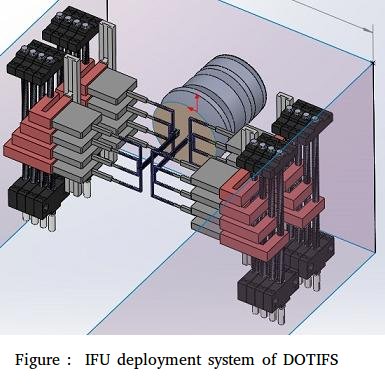It is mainly designed to study the physics and kinematics of the ionized gas, star formation and H II regions in the nearby galaxies. It is a novel instrument in terms of multi-IFU, built in deployment system, and high throughput. It consists of one magnifier, 16 integral field units (IFUs), and 8 spectrographs. Each IFU is comprised of a microlens array and optical fibers and has 7.4” x 8.7” field of view with 144 spaxel elements, each sampling 0.8” hexagonal aperture. The IFUs can be distributed on the telescope side port over an 8’ diameter focal plane by the deployment system.

Optical fibers deliver light from the IFUs to the spectrographs. Eight identical, all refractive, dedicated spectrographs will produce 2,304 R~1800 spectra over 370-740nm wavelength range with a single exposure. Volume Phase Holographic gratings are chosen to make smaller optics and get high throughput. The total throughput of the instrument including the telescope is predicted as 27.5% on average. Observing techniques, data simulator and reduction software are also under development. Currently, conceptual and baseline design review has been done. Some of the components have already been procured. The instrument is expected to see its first light in 2016.

